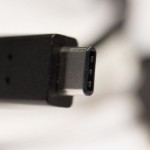 Last week Apple unveiled their new MacBook Air and Google unveiled the new Chromebook Pixel, and they have one new interesting trait in common – a USB Type-C (“USB-C” for short) port. This is awesome and here is why.
Last week Apple unveiled their new MacBook Air and Google unveiled the new Chromebook Pixel, and they have one new interesting trait in common – a USB Type-C (“USB-C” for short) port. This is awesome and here is why.
Phones are good, laptops are bad
Over the past few years, most cell phones (with the exception of Apple products) have used a worldwide standard connection for charging called MicroUSB. It’s nice to have most of our phones using the same plug, but many tablets use a different connector, and almost every laptop is different. That’s all (hopefully) about to change with USB-C. Not only do we have the devices mentioned above, but Google has promised USB-C coming soon to new Android devices, and it’s expected that virtually every manufacturer will begin to follow suit.
USB-C?
USB-C seems likely to replace all of those plugs, and many more. Not only does it have the ability to power everything from big laptops to small phones, it can also carry video (to monitors or TVs). The power can flow in either direction, so you could use it to charge up your laptop, and then use the same cable to charge your phone from your laptop. It has the ability to replace a lot of different cables in our lives.
Reversible
Even better, it’s reversible in both ways — both ends are the same, and you can plug it in “upside-down” (not that there’s really an “up”) and it’ll work. It’s similar to the new Lightning cable on newer iPhones and iPads, but it’s much faster and it’s available for any manufacturer to use.
Adaptors
Five years from now things could be glorious with a single cable to handle everything. However, the time in-between could be bumpy with a lot of older devices to keep up with. USB-C is completely backward compatible with existing USB connections, but current devices will need adapters in order to use the new cables.
From where we are now, the future looks awesome. When our family goes on a trip, I have to carry up to 8 different cables (two for various iPhones, a Micro-USB for Android devices, and a different cord for every laptop). Changing that to a handful of identical cables will be major space (and sanity) saver.
Is this the way things are going to be? There’s certainly no guarantee, but it’s looking like a likely bet. The key will be Apple; if they release future iPhones and iPads with USB-C, it’s a done deal. If not, it may take a bit longer for them to become mainstream.




